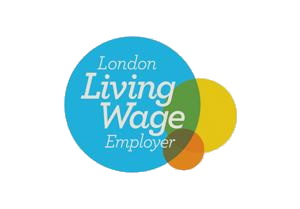Two weeks ago we noted that the Conservative Government’s response to the war in Ukraine was not having the ‘rallying’ effect that it had hoped for. This week has been no different, in fact, the Conservative stand in a worse position.
The 4% average Labour lead a fortnight ago has widened to a 5-6% lead nationally. This would still leave Labour as the largest party, but far short of a majority. Why are Labour now enjoying this healthier lead? The answer may lie in a poll by Survation that found Labour is now being seen in a net favourable light by the public. A +5% rating for an opposition party is not good, but it marks a clear shift in public perceptions for a party that has been constantly dogged by a poor reputation. Labour is gaining ground with new groups of voters, and improving its standing on certain issues.
For example, a recent bombshell poll of Cornwall, Cumbia, North Yorkshire, Norfolk, and North Wales (all comparatively rural areas of the UK), found Labour just 2% behind the Conservatives, when in 2019, they were 27.5% behind in these areas. The Conservative vote across these regions has collapsed 15%, whilst the Labour vote has risen 10%, with the Green Party vote quadrupling to 8%. This concurs with a poll from Opinium last September that found the Labour vote to have increased 14% from 20% in ‘Remain’ voting Conservative seats in the South and East of England.
Labour’s image is changing. According to polling from Redfield & Wilton Strategies, despite being largely unknown, Starmer leads the Prime Minister on foreign policy, environmental policy, and even on his ability to build a strong economy. Another devastating poll from Opinium found that the Conservatives have now lost their lead over Labour as most trusted to handle the economy.
New heights, fresh challenges
Two weeks ago we noted that the Conservative Government’s response to the war in Ukraine was not having the ‘rallying’ effect that it had hoped for. This week has been no different, in fact, the Conservative stand in a worse position.
The 4% average Labour lead a fortnight ago has widened to a 5-6% lead nationally. This would still leave Labour as the largest party, but far short of a majority. Why are Labour now enjoying this healthier lead? The answer may lie in a poll by Survation that found Labour is now being seen in a net favourable light by the public. A +5% rating for an opposition party is not good, but it marks a clear shift in public perceptions for a party that has been constantly dogged by a poor reputation. Labour is gaining ground with new groups of voters, and improving its standing on certain issues.
For example, a recent bombshell poll of Cornwall, Cumbia, North Yorkshire, Norfolk, and North Wales (all comparatively rural areas of the UK), found Labour just 2% behind the Conservatives, when in 2019, they were 27.5% behind in these areas. The Conservative vote across these regions has collapsed 15%, whilst the Labour vote has risen 10%, with the Green Party vote quadrupling to 8%. This concurs with a poll from Opinium last September that found the Labour vote to have increased 14% from 20% in ‘Remain’ voting Conservative seats in the South and East of England.
Labour’s image is changing. According to polling from Redfield & Wilton Strategies, despite being largely unknown, Starmer leads the Prime Minister on foreign policy, environmental policy, and even on his ability to build a strong economy. Another devastating poll from Opinium found that the Conservatives have now lost their lead over Labour as most trusted to handle the economy.
Le Pen and Mélenchon - squeezing the fringes
Finally, as the first stage of the French election campaign concludes, Le Pen has gained last minute momentum. At one point an ailing candidacy squeezed by other right-wing politicians (Pécresse and Zemmour), her campaign has closed the gap on Macron in the first round of voting. She is expected to finish second with 23% of the vote, according to an average of polls – this would be a stronger showing than her 2017 performance.
What is concerning for Macron is that he will likely win the second round with a far smaller victory than in 2017. What was a 2-1 thumping of Le Pen five years ago, will likely be reduced to within a few percentage points – some polling even points to Le Pen narrowly clinching victory.
Le Pen has benefitted largely from the collapse of Eric Zemmour’s campaign, who at one point, threatened her top two placement on the first round ballot. Jean-Luc Mélenchon has also surged in recent polls, replicating his 2017 surge prior to the first ballot. His success comes from the collapse of the Green-Ecology vote (Jadot), and the former governing Socialist Party’s near evaporation. The ideological fringes have increasingly squeezed out any centrist candidates, other than the sitting president.
Currently, polling averages from the 4th to 8th April suggest the following first round results:

*This figure represents the Republican Party’s 2017 figure, whose nominee was François Fillon.
**Others include the Socialist Party, Workers’ Party, the New Anticapitalist Party, the French Communist Party, Résistons!, and Debout la France.
Finally, based on UK-wide polling, the following results could be expected if an election were held today:

*Other accounts for the 18 seats in Northern Ireland, plus the Speaker’s seat.




